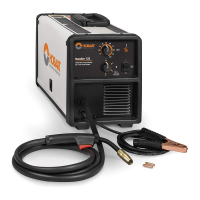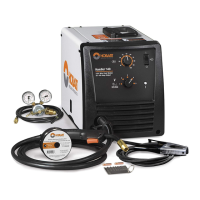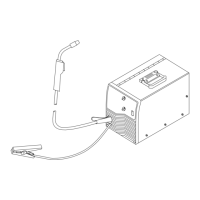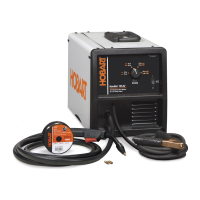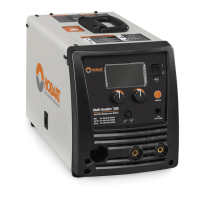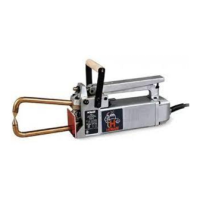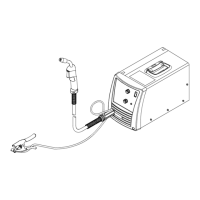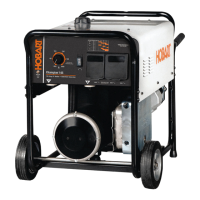OM-260 273 Page 36
SECTION 10 − ACCESSORIES/CONSUMABLES
10-1. Accessories
Part No. Description Remarks
770 187 Running Gear/Cylinder Rack For One Small Gas Cylinder, 100 lb (45 kg) max.
194 776 Small Running Gear/Cylinder Rack For One Small Gas Cylinder, 75 lb (34 kg) max.
195 186 Protective Cover Weatherproof Nylon
245 926 H100S4−10 Replacement Gun 10 ft length/.030−.035 wire size
300 796 SpoolRunner 100 Spool Gun For push/pull wire feeding
221 037**
770 198*
Regulator/Flowmeter
For Argon and Argon mixed shielding gas. Use
with replacement hose 183 581.
237 702** Regulator/Flowmeter
For CO
2
shielding gas. Use with replacement gas
hose 144 108.
*Available at farm and tool supply retailers.
** Available at Hobart/Miller welding distributors.
10-2. Consumables
Item Hobart Package Part No.* Miller Package Part No. **
Contact Tips
.023/.025 in. (0.6 mm) 770 174 (5 per package) 087 299 (10 per package)
.030 in. (0.8 mm) 770 177 (5 per package) 000 067 (10 per package)
.035 in. (0.9 mm) 770 180 (5 per package) 000 068 (10 per package)
.045 in. (1.2 mm) 770 183 (5 per package) 000 069 (10 per package)
MIG Nozzle (Standard) 770 404 169 715
Gasless Flux Cored Nozzle 770 487 226 190
Tip Adapter 770 402 169 716
Replacement Liners
.023/.025 in. (0.6 mm) 196 139 194 010
.030/.035 in. (0.8/0.9 mm) 196 139 194 011
.035/.045 in. (0.9/1.2 mm) 196 140 194 012
Replacement Drive Rolls For All Feed Head Assemblies
.023/.025 in. (0.6 mm) and
.030/.035 in. (0.8/ 0.9 mm)
V Groove
237 338 237 338
.030/.035 in. (0.8/ 0.9 mm)
and .045 in. (1.2 mm)
VK Groove
202 926 202 926
.030/.035 in. (0.8/ 0.9 mm)
V and VK Groove
246 565 246 565
*Available at farm and tool supply retailers.
** Available at Hobart/Miller welding distributors.
. A complete Parts List is available on-line at www.HobartWelders.com
To maintain the factory original performance of your equipment, use only Manufacturer’s Suggested
Replacement Parts. Model and serial number required when ordering parts from your local distributor.
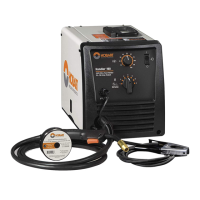
